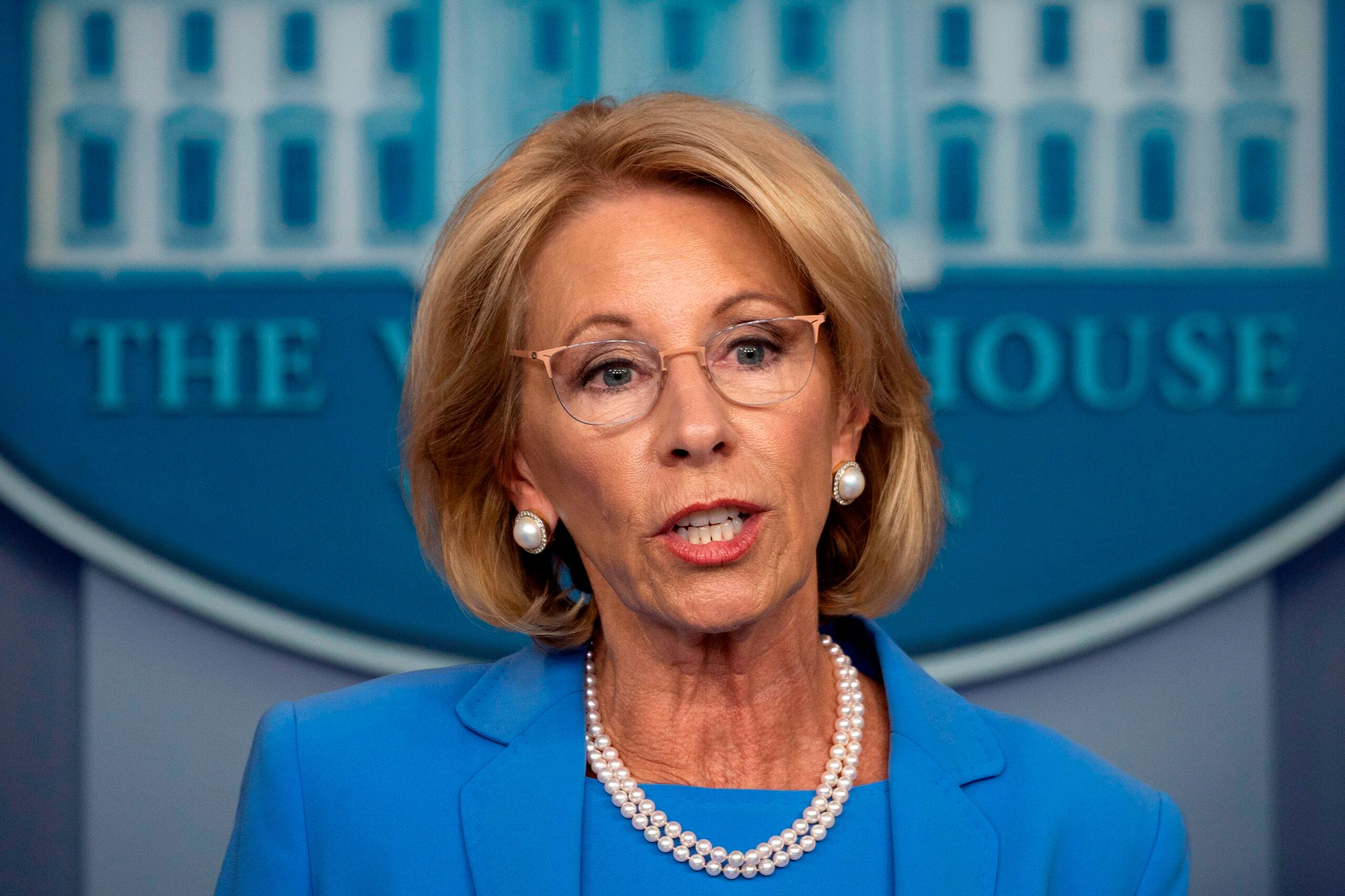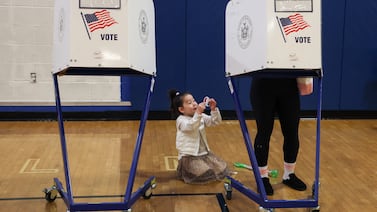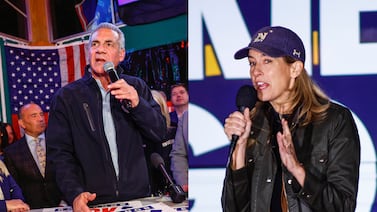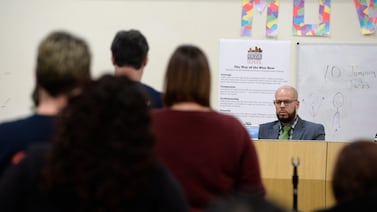Private schools are set to receive more support than they expected from the federal coronavirus relief package, while high-poverty school districts are set to receive less, thanks to guidance put out by Betsy DeVos’s federal education department.
The move will be a boon to private schools, many of which are likely facing their own fiscal challenges because of the pandemic. But it already has public school advocates up in arms, arguing that it will funnel precious resources to wealthy private schools while districts struggle to provide computers and free meals.
“The guidance as released allows for wealthy children in private school — ineligible for Title I — to receive CARES funding that was allocated to districts based on the low-income students they serve,” said Noelle Ellerson Ng, the associate executive director of the national school superintendents association. “That is inequitable.”
The guidance, which relies on what one lawyer called a “creative” interpretation of the federal CARES Act, appears to be the latest effort by DeVos to use the pandemic response legislation to further her educational philosophy, which favors alternatives to traditional public school districts and private school choice.
Angela Morabito, a department spokesperson, defended the guidance as consistent with the law’s intent of supporting students in both public and private schools.
At issue is how private schools will share in the billions of federal dollars meant to help schools recover from the pandemic and transition students to learning from home.
Most of the CARES Act money is being distributed to school districts using the Title I formula, the portion of federal education law that sends money to districts with lots of students from low-income families. That means districts with more low-income students are getting more relief money.
Every year, districts that receive Title I money have to indirectly share it with local private schools that serve low-income students, too, through a provision known as “equitable services.” If 5% of low-income students who live within the boundaries of Title I public schools go to private school, for example, 5% of the district’s Title I dollars must be used for services for certain private school students, like after-school programs, tutoring, or counseling. (The dollars cannot go to the private schools directly.)
Here’s where the guidance, released last week, comes in. The federal education department says districts must set aside a portion of the relief money for private school students in a different way: by calculating what share of all students in the area attend private school, not just what share of low-income students do.
In places where lots of affluent students attend private school, that could be a substantial blow for school districts. And since private school students are more likely to be white and from higher-income families, the move effectively redistributes money away from schools serving more low-income, black, and Hispanic students.
Take Louisiana. According to the state department of education, the federal guidance means districts will have to send a combined $31.5 million worth of support to private schools, rather than $8.6 million under the usual Title I procedures.
East Baton Rouge, a district where most of the 41,000 students are black and from low-income families, will have to send 25% of its relief money to private schools, even though those schools only serve 5% of the area’s low-income students. The shift redirects $3.7 million in federal aid.
In New York City, nearly 20% of school-age children attend private school, with much higher numbers in high-income areas.
“We are taking a close and careful look at this recently released federal guidance, but have initial concerns about its impact given an already difficult financial landscape due to COVID-19,” said Katie O’Hanlon, a spokesperson for New York City schools.
The national association of state school leaders outlined similar concerns in a letter sent to DeVos Tuesday asking her to revise the policy. “The effect would be that non-public schools would receive an inequitable amount of funding, much more federal support than Congress intended, or [districts] anticipated,” wrote Carissa Moffat Miller, the group’s executive director.
Notably, the language in the CARES Act on this point is straightforward. Districts should provide equitable services in the “same manner” as they do under Title I, it says.
The department’s interpretation relies on the fact that once districts receive the funds, they can use the money in a wide variety of ways and not just to help low-income students, since the federal CARES Act money is not itself Title I money.
“Under the CARES Act programs, services are available for all students — public and non-public — without regard to poverty,” the guidance reads.
Considering only low-income students in private schools, said Morabito, the department spokesperson, “would be placing non-public school students and teachers at a disadvantage that Congress did not intend because CARES Act services for public school students are not so limited.”
But Julia Martin, an education attorney at the law firm Brustein & Manasevit, said this interpretation is strained. “I think ED is being creative with their reading,” she said, referring to the federal education department.
Ng, of the superintendents association, described the guidance as “in conflict with the clear intent of the CARES Act and the historical application of equitable services.”
Myra McGovern, a spokesperson for the National Association of Independent Schools, said most of its schools have historically not sought or received federal support, but that it isn’t clear whether that will hold going forward.
“I don’t know yet whether or not schools will choose to participate ... or will feel differently about federal aid now,” she said. “We’re in the middle of figuring that out.”
It’s important to note that the department’s guidance is just that — guidance. Districts could choose not to comply with it, but doing so amounts to a legal gamble.





